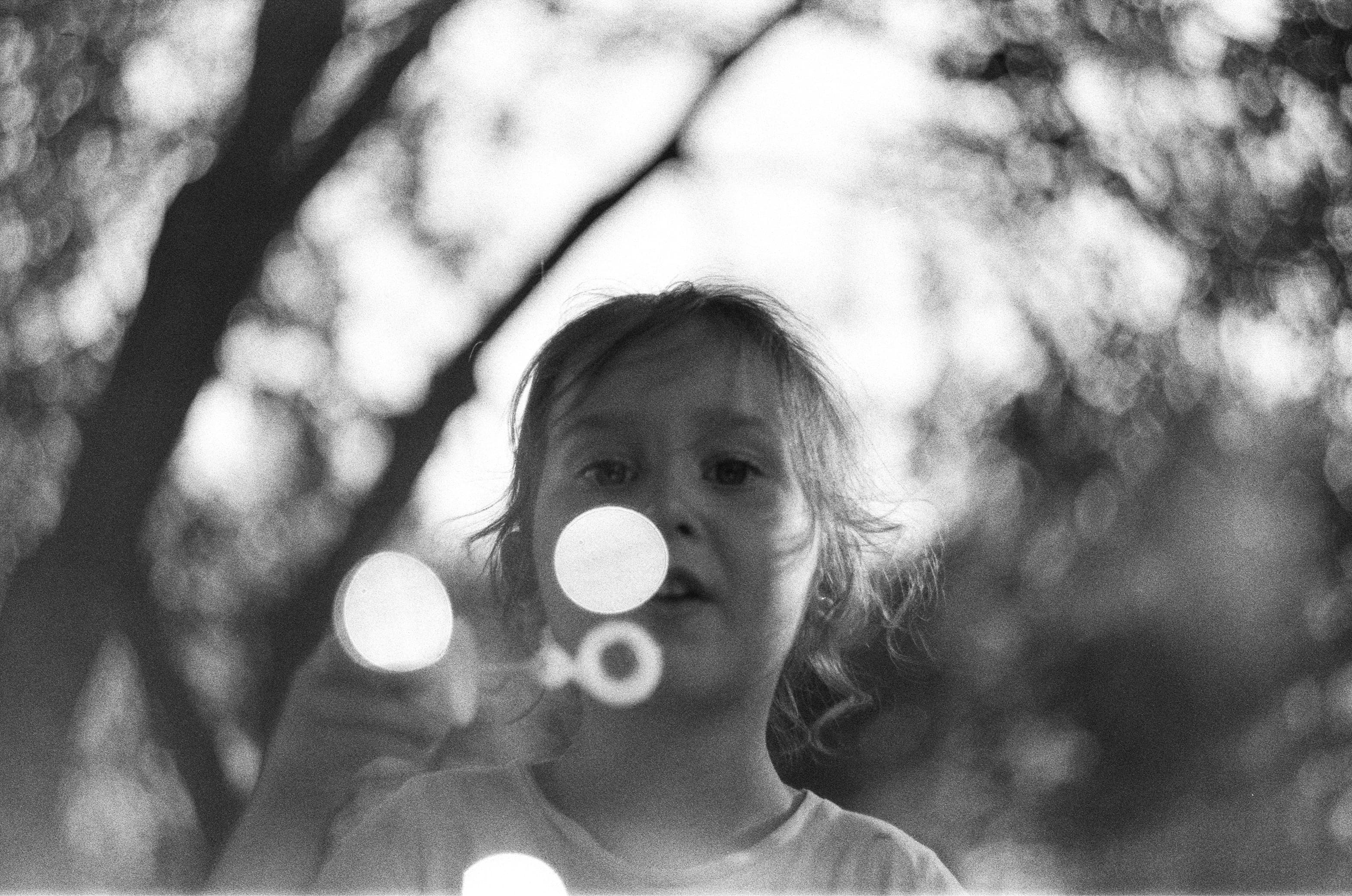
Exploring Inner Child Work
Discover the transformative power of inner child work. This article delves into the concept of the inner child, explores the impact of childhood experiences on adult behavior, and offers practical strategies for healing and self-discovery.
A Key to Breaking Generational Cycles of Trauma
What is Inner Child?
In the field of mental health and personal growth, inner child work has emerged as a scientifically grounded method for healing emotional wounds and fostering self-awareness stemming from childhood trauma. It acknowledges that our adult behaviors are influenced by our early experiences. Thus, the process focuses on meeting our unfulfilled needs by acting as our own nurturing parent. It is a profound journey of self-discovery and healing, aimed at reconnecting with and nurturing the inner child within each of us by gaining insight into our behaviors, triggers, desires, and requirements.
At its core, inner child work involves acknowledging and addressing the unmet emotional needs, traumas, and patterns that originated in childhood. The term "inner child" symbolizes the pure, authentic essence of our childhood selves—the part of us that experienced joy, innocence, curiosity, and vulnerability before life's complexities and traumas took their toll.
Inner child work is not about regressing into a state of childishness; rather, it is about embracing and healing the wounded aspects of our inner child to foster emotional wholeness and self-compassion in adulthood. Through this process, individuals can release suppressed emotions, reframe limiting beliefs, and cultivate a deeper sense of self-awareness and acceptance.
As grown-ups, we lug around emotional baggage from our childhood days, whether it was mild neglect or severe mistreatment. Many adults feel isolated in their lingering pains and opt to bottle up their emotions, believing that's what mature individuals are supposed to do. This is where healing one's inner child becomes so vital as it serves as a reminder that having feelings is perfectly normal and not something deserving of shame. By tending to the wounds of our childhood selves, we cultivate the sense of security and safety that our younger selves desperately craved. Doing so allows the positive traits like inquisitiveness and boundless ability to love to flourish.
Choosing to sidestep confronting past hurts can manifest into self-destructive patterns like over-working, substance abuse, or even racism.
By healing our inner child, we initiate a healing process that transcends generations.
Consider This Scenario
He. Feels. Completely. Humiliated.
In that moment, Jack’s confidence shatters, leaving behind scars and wounds that linger far beyond the classroom walls into his adulthood. Despite his best efforts to bury those painful memories, they continue to influence his self-esteem and hinder his ability to speak up and assert himself in various situations.
Connecting Childhood Experiences with Inner Child Work
This experience may seem like a distant memory, buried somewhere in our subconscious under the layers of time and adulthood. Yet, the impact it has had on our psyche remains profound...
In spite of our best efforts to move past it, the echoes of that childhood trauma continue to resonate in our mind, shaping our self-esteem and influencing our interactions with others.
This is just one example of the countless ways in which childhood experiences can leave lasting imprints on our lives. Whether it's a playground incident, a hurtful comment from a parent, or a sense of abandonment, these early wounds have the power to shape our beliefs about ourselves and the world around us for a long period of time.
None of Us Are Born into Adulthood
Instead, we navigate our way through the world, learning and growing, much like children do. It is within the universe of experience and play that children thrive and excel, absorbing knowledge and joy effortlessly.
Fast forward a few years, we’re adults. It's not just a matter of reaching a certain age or milestone; rather, it's about maintaining a balance between responsibility and playfulness. As we mature, we often become preoccupied with the demands of adult life, leaving little room for imagination and exploration.
The question remains:
When?
When is it a good time to rediscover that childlike spirit within us?
To reconnect with our inner child?
Unfortunately, many of us may never take the time to reconnect with our inner child, unaware of the profound impact it can have on our well-being. Yet, understanding the principles of inner child work can help us heal deep-seated wounds from childhood and reclaim the sense of wonder and curiosity that defines our inner child.
Process of Healing
So, what if there was a way to heal these wounds, to reclaim the sense of joy, curiosity, and resilience that defined our childhood selves? This is where inner child work comes in.
By diving deep into our past experiences, we can uncover the root causes of our emotional pain and begin the process of healing.
By nurturing and integrating the inner child, individuals can experience profound healing and liberation from patterns of self-sabotage, codependency, and perfectionism.
We can learn to reparent ourselves, offering the love, support, and validation that may have been lacking in our young years.
We can develop a sense of compassion and understanding for our inner child by unlocking the door to self-discovery, healing, and personal transformation…all of which can lead to a freer version of ourselves allowing them to be manifested freely and authentically.
We can foster greater empathy towards oneself and others, as it allows individuals to recognize and validate their own emotional experiences without judgment or shame.
By reclaiming and honoring the inner child, individuals can cultivate a stronger sense of self-worth and authenticity, leading to more fulfilling relationships and a deeper connection to their innate creativity and intuition.
Challenges in Inner Child Work
However, as we begin our journey of self-discovery and healing, we may encounter challenges along the way:
Confronting Unpleasant Emotions
For many of us, reconnecting with the innocence and openness of childhood may also entail confronting difficult emotions, especially when that connection is not welcome, intentional, or planned for.
It can resurface strictly unannounced, creating certain fears or toxic patterns;
Practical Example:
State of Readiness
It’s equally important that we assess our state of readiness throughout this journey. We need to make sure we are ready for this confrontation. Sometimes we really don’t have the headspace to deal with it and that’s O.K.
Lengthy Journey
To top it up, it’s critical to remember that the lessons learned in childhood can cloud our ability to embrace new experiences and adapt to change in adulthood. Thus, it’s a lengthy journey and we need to make sure we are socially and emotionally equipped and resilient enough to deal with it.
Bumpy Ride
Inner child work steps would be confronting painful memories and emotions that we've long suppressed. It’s never easy triggering old memories, especially ones that make us feel lower on self-esteem and uncomfortable at the core. Just as children navigate their world through play and imagination, so too can adults tap into their inner child to deal with the complexities of their emotions, thoughts, and beliefs. However, the transition from childhood to adulthood can be bumpy as we tend to develop expectations of the world around us, only to find that reality doesn't always meet them. It ranges from disappointment and heartbreak to unfulfilled dreams and expectations that may dim the light of our inner child, causing us to deprioritize playfulness in favor of practicality.
By building up the courage to face these challenges head-on, we can gradually start to loosen their hold on us and move forward. Dealing with long-ignored trauma, that has been dormant for years, can be incredibly harmful to our well-being.
How Can Therapy Help Us?
Attachment Theory and Developmental Psychology
Inner child work stems from the principles of attachment theory and developmental psychology, emphasizing the impact of early childhood experiences on adult mental health.
It involves acknowledging and addressing the unresolved emotions, traumas, and, most specifically, attachment patterns that originated in childhood. The "inner child" represents the subconscious aspect of the psyche that retains memories and emotions from childhood, influencing adult behavior and relationships.
However, through evidence-based therapeutic techniques such as cognitive-behavioral therapy (CBT), psychodynamic therapy, and mindfulness-based interventions, individuals explore and process their inner child's experiences.
How? By facilitating emotional regulation, cognitive restructuring, and combining various parts of the self, ultimately leading to greater emotional resilience and self-compassion.
Neuroplasticity and Emotional Regulation
By rewiring neural circuits in the brain that are associated with childhood trauma and attachment trauma.
By promoting insight into unhealthy behavioral and relational patterns and dynamics.
By addressing core emotional wounds and unmet needs from childhood, individuals can cultivate healthier relationships, improved self-esteem, and a greater sense of agency in their lives.
By promoting structural and functional changes, enhancing emotional well-being, and adaptive coping strategies. Research in neuroscience has shown that therapeutic interventions aimed at healing past emotional wounds have indeed led to better holistic well-being.
A Few Journeys into Inner Child
Healing Childhood Wounds
Sarah, a client undergoing therapy, was looking for answers to her attachment patterns and relational dynamics with caregivers. She recalls moments of feeling unseen and unheard by her caregivers which significantly affected her sense of unworthiness. Through therapy, self-reflection, and employing techniques such as guided imagery and narrative therapy, Sarah unfolds critical childhood memories and learns to reframe negative self-beliefs. She also learns to validate her younger self's emotions and needs, offering the comfort and support she longed for as a child. She practices inner child meditations, visualizing herself embracing her inner child with love and compassion, reassuring her that she is worthy of love and belonging.
Overcoming Perfectionism
John's perfectionistic tendencies stem from a childhood environment where his worth was tied to his achievements and external validation. He recalls moments of being criticized for his mistakes and failures which led to a fear of rejection. By seeking therapy and engaging in cognitive restructuring exercises, John is able to challenge the unrealistic standards as well as the fear of failure ingrained since childhood. He starts engaging in inner dialogue with his inner child in order to reassure him that his worthiness is inherent and does not vary with his achievements. John practices self-compassion exercises, acknowledging his efforts and progress with a growth mindset rather than a fixed mindset.
Signs that Your Inner Child is Poking You
Often feel like a victim and tend to self-sabotage.
React strongly when needs are not met.
Struggle with setting boundaries.
Difficulty expressing needs or articulating emotions in relationships.
Feel protected and safe when you put walls up.
A high sense of self-judgment and a critical inner voice.
Allowing others to dictate how you feel.
Experience feelings of low self-esteem, frustration, annoyance, and immaturity.
Feeling misunderstood or unheard.
Fear abandonment and/or commitment.
Frequently dwell on unresolved issues from past childhood experiences, affecting current emotions.
How to Break Free!
Listen to Yourself
Pay attention to triggers that evoke emotional responses and connect them to childhood wounds. Practice self-awareness and self-care to address unmet needs from childhood.
Understand Your Pain
Understanding the origins of your inner child's pain is essential for healing; that can be done by trying to remember old memories, identifying root causes, validating your experiences, and recognizing how they continue to impact you as an adult.
Practice Breathwork
Use breathwork and mindfulness techniques to manage stress, regulate emotions, and create a state of “homeostasis”
Find Ways to Reignite Your Playfulness and Creativity
Engage in creative activities that nourish your inner child and transcend you to a state of flow, such as cooking, washing the dishes, gardening, painting, etc. Let go of the self-critique and fear of failure that becomes so ingrained as we grow older and remember to just have fun in the process!
Reparent Yourself While Practicing Self-Compassion
Recognize that no parent is flawless and acknowledge the limitations of your caregivers. By practicing self-care and compassion, like positive self-talk and challenging your inner critic, you essentially become your own nurturing figure. When your inner wounded child calls for help, respond to yourself with the kindness and support you needed as a child.
Try Inner Child Therapy
Seeking therapy can help you process any lingering shame by exploring childhood experiences and their influence on current behavior. Therapists may use various techniques such as attachment theory and even art therapy to facilitate this process, guiding clients through discussions on specific memories, family dynamics, and triggers.

Relevant Media:
Give Your Inner Child Permission to Heal | Kristin Folts | TEDxOcala








